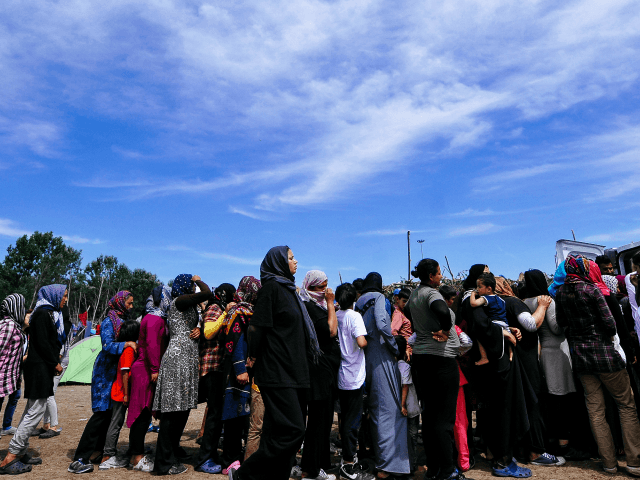Exhausted but hopeful, hundreds of migrants defy summer heat in a makeshift camp on the Serbia-Hungary border, determined to reach the EU member nation despite tough new measures aimed at stopping them.
A few metres from the metal fence topped with barbed wire which marks the border, dozens of tents, many cobbled together from blankets and branches, offer the only shelter to some 600 migrants and refugees from the Middle East, Asia and Africa.
They wait near the Horgos-Roszke border post in hope of being let into Hungary’s transit zone to seek asylum, but that has become even more difficult since Budapest tightened its rules for asylum-seekers and decided to return all those caught within eight kilometres (five miles) of the border.
“As a result of new legislative measures in Hungary, which took effect on 5 July, the number of refugees and migrants on the Serbian side of the border has doubled over the last few days to above 1,300, the majority of them women and children,” the UN team in Serbia said in a statement Friday.
Some 40 kilometres west, another makeshift camp at the Kelebija border crossing is home to several hundred more migrants, while some 300 have taken shelter in a state-run reception centre in the nearby town of Subotica, double its capacity of 150.
– ‘Balkan route still exists’ –
The numbers arriving in Serbia are well down from the 4,000 to 5,000 a day seen in 2015 and early 2016, after the so-called “Balkan route” to wealthy northern Europe was effectively shut down to migrants in March.
But Serbian authorities voiced alarm at the number of people still arriving in their country, saying that 102,000 migrants had been registered since the start of the year — more than 500 a day.
“That means that Western Balkans route still exists,” Serbia’s Labour Minister Aleksandar Vulin said on Friday, adding that “Serbia will not allow to be the space where migrants will crowd.”
The UN has warned that the latest measures taken by Hungary — whose right-wing Prime Minister Viktor Orban has taken a tough line on Europe’s migrant crisis — “will further aggravate the situation”.
The UN said a total of only 30 asylum-seekers have been allowed to enter Hungary each day, while “hundreds more have had to wait for weeks out in the open in often desperate and inhumane conditions”.
Humanitarian organisations led by the UN refugee agency (UNHCR) deliver aid to migrants, but sanitation conditions in the Horgos camp are extremely poor: there are few toilets and no bathrooms in the camp. The only water tap is mobbed by people trying to wash and do laundry.
Some of those in the camp have already tried to sneak across the border — unsuccessfully.
“I tried to enter Hungary illegally, there were 15 of us in a group, a smuggler cut the fence, we walked for about 30 minutes and than police caught us and sent back to Serbia,” a 23-year-old Afghan told AFP, asking not to be named due to fear for his family’s safety back in Kabul.
According to Hungarian Helsinki Committee (HHC), more than 17,000 irregular migrants have been apprehended by Hungarian authorities since the beginning of the year.
Some migrants are finding that even after shelling out huge sums to people smugglers, their dreams of reaching the EU to claim asylum are hitting a wall.
In Turkey “I paid 5,000 euros ($5,500) to go to Germany, but only made it to Bulgaria. There I paid 3,000 euros more to go to Austria, but only arrived to Serbia. Now I don’t have money any more,” 22-year-old Iranian Husein Apposi said.


COMMENTS
Please let us know if you're having issues with commenting.